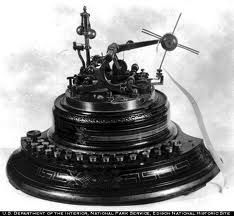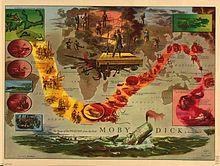This is your morning Open Thread. Pour your favorite beverage and review the past and comment on the future.
Find the past “On This Day in History” here.
November 25 is the 329th day of the year (330th in leap years) in the Gregorian calendar. There are 36 days remaining until the end of the year.
On this day in 1999, The United Nations General Assembly passes a resolution designating November 25 the International Day for the Elimination of Violence Against Women. The resolution, which was introduced by the Dominican Republic, marked the anniversary of the death of three sisters, Maria, Teresa, and Minerva Mirabel, who were brutally murdered there in 1960. While women in Latin America and the Caribbean had honored the day since 1981, all UN countries did not formally recognize it until 1999.
Many organizations, including the United Nations Development Fund for Women (UNIFEM), had been pushing for international recognition of the date for some time.


The Mirabal sisters were four Dominican political dissidents who opposed the dictatorship of Rafael Trujillo. Three of the sisters were assassinated by persons unknown.
Patria Mercedes Mirabal (February 27, 1924 – November 25, 1960), Belgica Adela “Dede” Mirabal-Reyes (March 1, 1925 – present), Maria Argentina Minerva Mirabal (March 12, 1926 – November 25, 1960) and Antonia Maria Teresa Mirabal (October 15, 1935 – November 25, 1960) were citizens of the Dominican Republic who fervently opposed the dictatorship of Rafael Trujillo. Dede Mirabal was not assassinated and has lived to tell the stories of the death of her sisters. Presently, she lives in Salcedo, Dominican Republic in the house where the sisters were born. She works to preserve her sisters’ memory through the Museo Hermanas Mirabal which is also located in Salcedo and was home to the women for the final ten months of their lives. She published a book Vivas en El Jardin, released on August 25, 2009.
The Mirabal women grew up in an upper class, well-cultured environment. Their father was a successful businessman. All became married family women. When Trujillo came to power, their family lost almost all its fortune. They believed that Trujillo would send their country into economic chaos. Minerva became particularly passionate about ending the dictatorship of Trujillo after talking extensively with an uncle of hers. Influenced by her uncle, Minerva became more involved in the anti-Trujillo movement. She studied law and became a lawyer, but because she declined Trujillo’s romantic advances, he ordered that while she would be issued a degree she was not to receive her practitioner’s license. Her sisters followed suit, and they eventually formed a group of opponents to the Trujillo regime, known as the Movement of the Fourteenth of June. Within that group, they were known as “The Butterflies” (Las Mariposas in Spanish) because that was the underground name that Minerva was given. Two of the sisters, Maria Argentina Minerva Mirabal and Antonia Maria Teresa Mirabal, were incarcerated and tortured on several occasions. While in prison they were repeatedly raped. Three of the sisters’ husbands were incarcerated at La Victoria Penitentiary in Santo Domingo.
Despite these setbacks, they persisted in fighting to end Trujillo’s leadership. After the sisters’ numerous imprisonments, Trujillo was blamed for their murders, but this is now being questioned. During an interview after Trujillo’s assasination, General Pupo Roman claimed to have personal knowledge that they were killed by Luis Amiama Tio, perhaps to create a rise in anti-Trujillo sentiment. On November 25, 1960, he sent men to intercept the three women after they visited their husbands in prison. The unarmed sisters were led into a sugar cane field and executed, they didn’t even have the luxury of being shot, instead they were beaten to death, along with their driver, Rufino de la Cruz. Their car was later thrown off of a mountain known as La Cumbre, between the cities of Santiago and Puerto Plata, in order to make their deaths look like an accident.
This day also marks the beginning of the 16 days of Activism against Gender Violence. The end of the 16 Days is December 10, International Human Rights Day.


 Life actually had its start earlier in the 20th century as a different kind of magazine: a weekly humor publication, not unlike today’s The New Yorker in its use of tart cartoons, humorous pieces and cultural reporting. When the original Life folded during the Great Depression, the influential American publisher Henry Luce bought the name and re-launched the magazine as a picture-based periodical on this day in 1936. By this time, Luce had already enjoyed great success as the publisher of Time, a weekly news magazine.
Life actually had its start earlier in the 20th century as a different kind of magazine: a weekly humor publication, not unlike today’s The New Yorker in its use of tart cartoons, humorous pieces and cultural reporting. When the original Life folded during the Great Depression, the influential American publisher Henry Luce bought the name and re-launched the magazine as a picture-based periodical on this day in 1936. By this time, Luce had already enjoyed great success as the publisher of Time, a weekly news magazine.
 The Nuremberg Trials were conducted by an international tribunal made up of representatives from the United States, the Soviet Union, France, and Great Britain. It was the first trial of its kind in history, and the defendants faced charges ranging from crimes against peace, to crimes of war, to crimes against humanity. Lord Justice Geoffrey Lawrence, the British member, presided over the proceedings, which lasted 10 months and consisted of 216 court sessions.
The Nuremberg Trials were conducted by an international tribunal made up of representatives from the United States, the Soviet Union, France, and Great Britain. It was the first trial of its kind in history, and the defendants faced charges ranging from crimes against peace, to crimes of war, to crimes against humanity. Lord Justice Geoffrey Lawrence, the British member, presided over the proceedings, which lasted 10 months and consisted of 216 court sessions. On November 19, 1863, at the dedication of a military cemetery at Gettysburg, Pennsylvania, during the American Civil War, President Abraham Lincoln delivers one of the most memorable speeches in American history. In just 272 words, Lincoln brilliantly and movingly reminded a war-weary public why the Union had to fight, and win, the Civil War.
On November 19, 1863, at the dedication of a military cemetery at Gettysburg, Pennsylvania, during the American Civil War, President Abraham Lincoln delivers one of the most memorable speeches in American history. In just 272 words, Lincoln brilliantly and movingly reminded a war-weary public why the Union had to fight, and win, the Civil War. On this day in 1883,
On this day in 1883, 

 Did the young Austrian nun named Maria really take to the hills surrounding Salzburg to sing spontaneously of her love of music? Did she comfort herself with thoughts of copper kettles, and did she swoon to her future husband’s song about an alpine flower while the creeping menace of Nazism spread across central Europe? No, the real-life Maria von Trapp did none of those things. She was indeed a former nun, and she did indeed marry Count Georg von Trapp and become stepmother to his large brood of children, but nearly all of the particulars she related in her 1949 book, The Story of the Trapp Family Singers, were ignored by the creators of the Broadway musical her memoir inspired. And while the liberties taken by the show’s writers, Howard Lindsay and Russel Crouse, and by its composer and lyricist, Richard Rodgers and Oscar Hammerstein II, caused some consternation to the real Maria von Trapp and to her stepchildren, according to many later reports, those liberties made The Sound of Music a smash success from the very night of its Broadway opening on this day in 1959.
Did the young Austrian nun named Maria really take to the hills surrounding Salzburg to sing spontaneously of her love of music? Did she comfort herself with thoughts of copper kettles, and did she swoon to her future husband’s song about an alpine flower while the creeping menace of Nazism spread across central Europe? No, the real-life Maria von Trapp did none of those things. She was indeed a former nun, and she did indeed marry Count Georg von Trapp and become stepmother to his large brood of children, but nearly all of the particulars she related in her 1949 book, The Story of the Trapp Family Singers, were ignored by the creators of the Broadway musical her memoir inspired. And while the liberties taken by the show’s writers, Howard Lindsay and Russel Crouse, and by its composer and lyricist, Richard Rodgers and Oscar Hammerstein II, caused some consternation to the real Maria von Trapp and to her stepchildren, according to many later reports, those liberties made The Sound of Music a smash success from the very night of its Broadway opening on this day in 1959.
